Dreaming of standing face-to-face with the world’s highest mountain? This Everest Base Camp Trek Guide will help you understand all there is to know about this popular trek.
Considered to be one of the most popular treks in the world, this trek sees trekkers, travellers and adventure enthusiasts from all across the globe. From coming up close with the Khumbu Glacier to enjoying the cultural side of Nepal, this trek to Everest Base Camp is all about giving you an adventure of a lifetime. This once in a lifetime experience is a MUST for any adventure enthusiast and does not require any technical climbing skills.
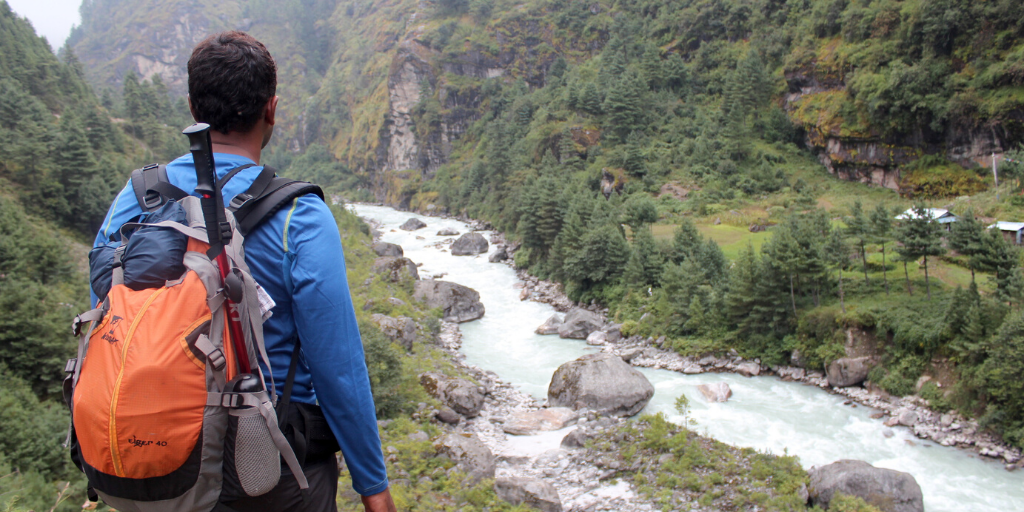
Here’s What This Everest Base Camp Guide Will Cover
- Why Trek to Everest Base Camp?
- Choosing the Right Trek Partner
- Nepal Visa for Indians
- Everest Base Camp Route
- The Trek Itinerary
- Perfect Time To Trek to Everest Base Camp
- Difficulty Level of the EBC Trek
- Fitness Level Required for the Trek
- Packing 101: Your Everest Base Camp Guide to Packing Right
- Layering Up for a Himalayan Trek
- All You Need to Know About AMS
- Accommodation & Food on the trail
- Insurance for the EBC Trek
- Tipping System in Nepal
- What To Expect on a Trek to Everest Base Camp
Why Trek to Everest Base Camp?

- The flight from Kathmandu to Lukla is considered to be one of the deadliest and scariest landings and take-offs in the world!! The Lukla airport is also considered to be the shortest runway in the world making this flight journey an unparalleled adventure in itself. Hold on to your seat folks!
- This trek goes through the UNESCO World Heritage Site – Sagarmatha National Park and is one of the major highlights of this trek. The trail is steeped within the Himalayan protected area and gives splendid views of various mighty 8,000ers and other peaks in the region!
- You get to trek to the extremely scenic town of Namche Bazaar. Also known as the “Gateway to the Himalayas in Nepal”, this little quaint town boasts of magnificent views of Kongdi RI, the Thamserku and of course- the Everest from its step-like terrains.
- Get up close with the Sherpa Culture of Nepal. The Khumbu region is said to have the highest population of Sherpa’s in the world. The EBC trek gives you a great opportunity to interact with these people of the Himalayas who are an inspiration to the trekkers across the world.
- Welcome to the land of Stupas. This trek will take you on a spiritual journey with it’s hundreds and thousands of Stupas & monasteries that adorn the trail. One of the popular & revered monasteries you get to visit is the Tengboche Monastery during the trek.
- The Everest Base Camp is definitely undoubtedly the biggest highlight of the trek, marking the final destination or end to the 13-day journey. The overwhelming feeling of pride and a sense of achievement that you feel when you reach base camp cannot be put in words. Standing under the shadow of Mount Everest, the magnitude of the moment will make the hard work worth it.
- The Killer sunrise from Kala Patthar you see the morning after you trek to Everest Base Camp will blow your mind away. To see the sun rise from the shoulders of Mount Everest would be the best sunrises you would ever see in your entire life!
Choosing the Right Trek Partner for EBC

When it comes to trekking, you need to ensure that you know who you’re trekking with. With an on-field experience of over 10 years, our itineraries are expertly crafted to ensure you get the best possible experience. When you trek with TrekNomads, you can expect:
- Premium Experience
- Itineraries that ensure proper acclimatization
- All-inclusive value-for-money package
- Smaller groups to ensure quality
- Stringent safety measures & procedures
- Comfortable Accommodation in teahouses
- 3-Meals a day
- Experienced & Certified Trek Captain who will accompany you on the trek
Nepal Visa
For citizens of countries other than India, you will be required to purchase a Visa. The cost for the Visa can range anywhere between USD 30 – USD 50 depending on the number of days you need to be in Nepal. We always recommend getting the 30-day Visa since there could be a possibility of delays and setbacks during the trek.
Everest Base Camp Trek Route
The classic and most popular route to Everest Base Camp starts from Lukla, passing through Namche Bazaar and then heading up to Lobuche from Dingboche and then finally to Gorakshep. This classic Everest Base Camp route is extremely popular and easier.
The other route that is less commonly opted for is Everest Base Camp through Gokyo Ri and Chola Pass. This is slightly more challenging but has brilliant views of the Gokyo Lakes and the chance to summit Gokyo Ri.
The route that we opt for on our Everest Base Camp trek is this:

The Trek Itinerary
While most operators out there give you a shorter itinerary of 13 days overall, we strongly believe in giving a very breathable itinerary. Right from giving enough days to acclimatize to keeping a breather towards the end before departing home in case of delays, this is what we follow at TrekNomads:
- Day 1: Arrive at Kathmandu
- Day 2: Fly from Kathmandu to Lukla, Trek to Phakding
- Day 3: Trek from Phakding to Namche Bazaar
- Day 4: Acclimatisation Day at Namche Bazaar
- Day 5: Trek from Namche Bazar to Tengboche
- Day 6: Trek from Tengboche to Dingboche
- Day 7: Acclimatisation Day at Dingboche
- Day 8: Trek from Dingboche to Lobuche
- Day 9: Trek from Lobuche to Gorak Shep and then trek to Everest Base Camp
- Day 10: Sunrise trek to Kalapatthar then Trek to Periche
- Day 11: Trek from Periche to Namche Bazaar
- Day 12: Trek from Namche Bazaar to Lukla
- Day 13: Fly from Lukla to Kathmandu
- Day 14: Sightseeing at Kathmandu
- Day 15: Buffer day – for rest or try activities like Bungy Jumping/River Rafting
- Day 16: Departure from Kathmandu
Perfect Time to trek to EBC
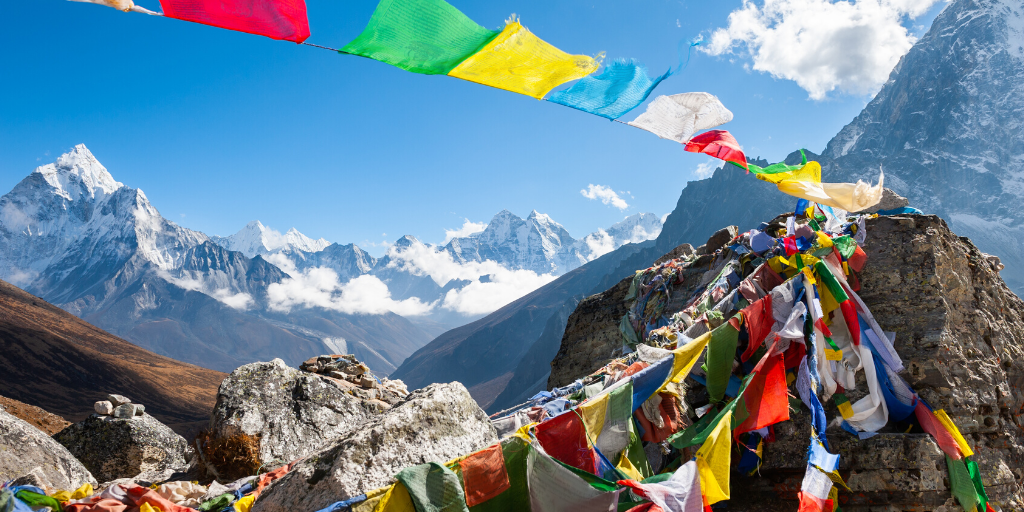
There are two seasons when you can trek to Everest Base Camp. The first is from April – May (Spring) and the second is October – November (Autumn). The latter is considered to be a post-monsoon time and chances of it raining through the trail are lower. The Sagarmatha region is in full bloom during the autumn giving you a palette of colors that you can enjoy. The spring season sees plenty of indigenous species that are in a colorful display and in full bloom.
Difficulty Level of the EBC Trek

This trek is graded challenging to extreme because you will be trekking for 13 consecutive days over rough terrain, you will be exposed to increasing altitudes each day, averaging 4,000 m and up to a maximum of 5,545 m. The terrain is occasionally rough with lots of steep ascents and descents and adding to this the weather conditions may fluctuate every now and then.
When you’re on the trail, the idea will be to try and cover approx 8 Km every day. While you may want reach the next stop faster, you need to focus on not exhausting yourself too much as you will be trekking consecutively. Having said that, this trek is easily achievable for Nomads who are relatively fit and are willing to take on a good adventure.
Fitness Level Required for the Trek

This high-altitude trek requires intense physical and mental strength along with stamina and endurance. If you’re not already following a fitness regime, you would need to follow a 3 to 6-month regime that can help you get fit for the trek. The training routine is spread over four months and you would be expected to work out at least 4 times a week. You will have to follow on a good combination of exercises that works on all parts of your body including – Upper Body, Core, Endurance, Lower Body, Shoulder strength and streamlining your breathing pattern.
Here’s a quick 8-week regime of curated exercises that we’ve built to help you reach the best fitness level for the Everest Base Camp Trek:
- Stair Climbing
Days: Mon, Thurs
Routine: 5 min – (2.5 min continuously*2 sets) with a 1 min break between each set
How will this help – Pushing your body against gravity is a great cardiovascular activity. Stair climbing helps strengthen the muscles around your knees and helps build endurance. - Push-Ups
Days: Mon, Thurs
Routine: 5*2 Set (10) – (1 min rest between each set)
How will this help – Push-ups help you build a stronger upper body while strengthening your core. This exercise helps when you have to ascend while carrying a backpack. - Squats
Days: Mon, Thurs
Routine: 5*2 Set (10) – (1 min rest between each set)
How will this help – Squats are the best form of functional fitness. They promote balance and stability and strengthen legs, thighs, hips, buttocks, and hamstrings. - Crunches
Days: Tues, Fri
Routine: 5*2 Set (10) – (1 min rest between each set)
How will this help – Crunches work on your abdominal muscles to build your core strength. This exercise will help you keep your balance on uneven surfaces. - Interval Running
Days: Tues, Fri
Routine: 15 min – (alternate 60 secs of continuous running 90 secs brisk walk)How will this help –Running is a great cardiovascular workout, it is also an aerobic activity that uses more oxygen. This workout helps makes your lungs stronger.
- Burpees
Days: Tues, Fri
Routine: 5*2 Set (10)- (1 min rest between each set)
How will this help – Burpees is a great full-body strength training exercise and the ultimate example of functional fitness which helps abs, hamstrings, chest, glutes, and arms. - Rest
Days: Wed, Sat, Sun
How will this help – Rest is an integral part of your fitness routine which must not be missed. Overdoing can cause an unnecessary injury to your body.
You can also be a part of a monitored fitness regime run by our Trek Captain – Naveen Mallesh.
Packing 101: Your Everest Base Camp Guide to Packing Right
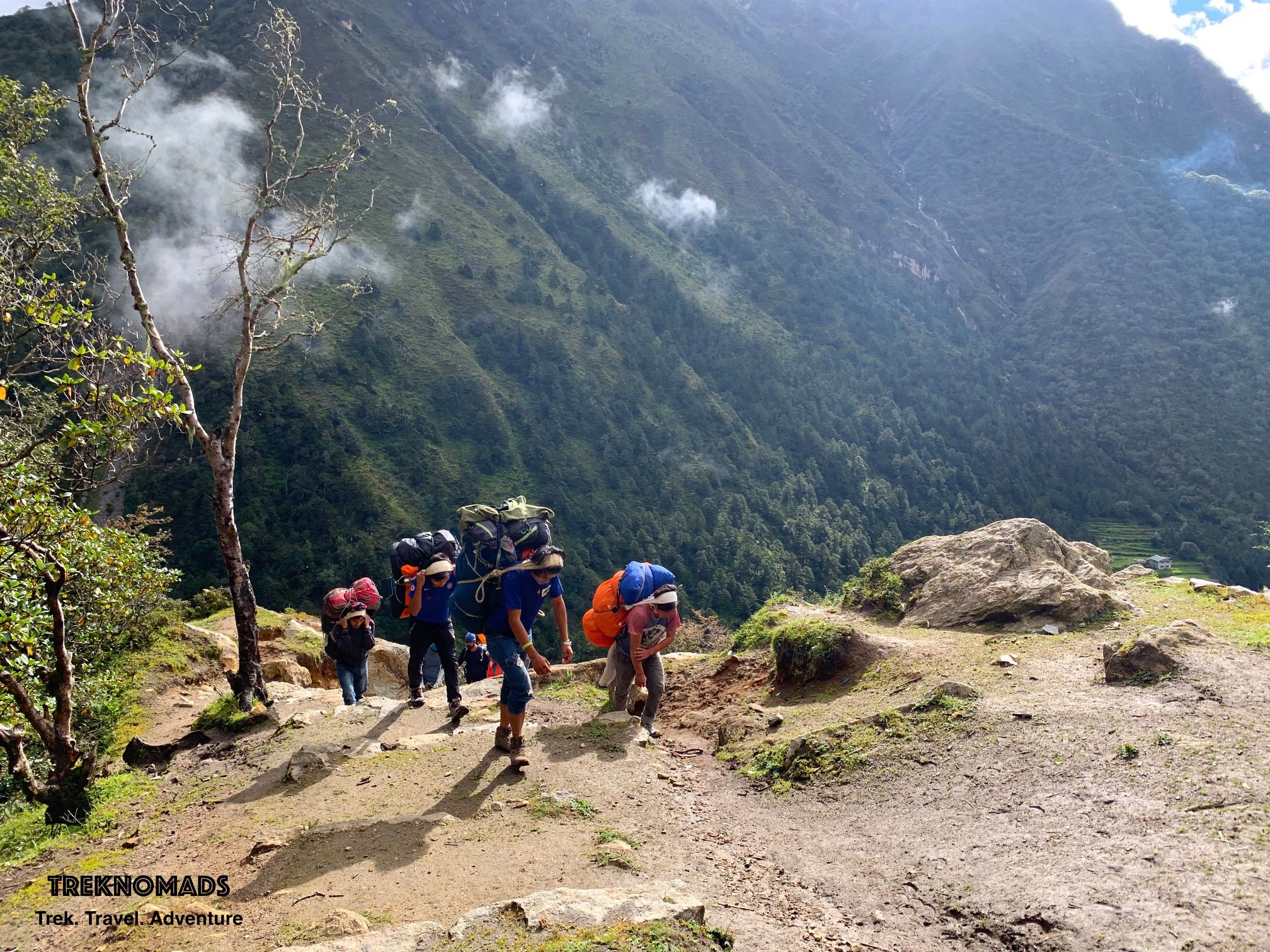
This Everest base camp guide has all the necessary details that you will require to check off your packing list for the trek:
Gear:
- Rucksack: 60 – 70 liters to carry all your gear. This bag will be carried by porters. Ensure that you pack only the necessary items and avoid overpacking.
- Backpack: A 20-25 liters backpack that you will carry on your trek every day. This backpack will have water bottles, lip balm, moisturizing lotion, camera, power bank, energy/protein bars, sunglasses, hand towel, extra pair of active/dri-fit/synthetic socks – all of this is good enough to get you through the trek easily. Also, get a cover for your backpack.
Footwear:
Your boots are probably one of the most important equipment you will be required to wear on your Everest Base Camp Trek – we would definitely recommend you invest well in a good pair of shoes.
You will need to make sure that your boots are high-ankled, waterproof and well insulated to help you protect from the freezing temperature. Decathlon has a great pair of waterproof shoes for men & for women.
Alternatively, don’t forget to carry a pair of open sandals that can be worn at the campsite. It is essential that you give your feet some relief from the boots after trekking for long hours. Make sure that you wear these with a good pair of woolen socks.
Socks:
We know that the first option that comes to mind when it comes to choosing the right socks in this instance is Woolen. But let us tell you, trekking in woolen socks can be a bit of a pain. The best choice of socks you can carry is the ones meant for active-wear. These normally come with a blend of woolen and synthetic fabric. Not only do they dry faster, they make your feet comfortable – something that is essential for long-distance hiking.
It is also recommended that you keep an extra pair of socks for each day in case your current socks get wet, you will need to change your socks without any delay.
Carry about 4 pairs of active-socks and 4 pairs of Woolen socks. Once you reach your camp for the day, ensure that you clean & dry your feet and wear the woolen socks (2 pairs to make it extra warm as temperatures would dip down in the night).
Gloves:
An Everest Base Camp guide would be incomplete without a great pair of gloves. You will be wearing gloves all through the day. You are required to carry about 4 pairs of good woolen gloves.
Other Accessories:
- Water Bottles – (One Thermas & one regular bottle – 2*1 Litres)
- Toiletries, wet wipes & tissue rolls (2)
- Sunscreen – SPF 40 & above
- Moisturizing lotion, lip balm, and Deo stick/deodorant
- Personal medicines (The trek lead will be carrying a basic first aid kit)
- Utility kit – Safety pins, rubber bands, clips, needles etc.
- Plastic bags – biodegradable
- Power bank – 2 preferably
- 5 Photocopies of your PASSPORT for various permits etc.
- Passport Size photos – 4 to 5
Here’s a quick guide to layering up for any Himalayan trek:

A good part of this Everest Base Camp guide is not just to tell you what to pack, but to also help you understand how you can layer yourself up for the trek.
Head Gear:
-
- Woolen Cap – That can cover your ears and head entirely
- Woolen balaclava that can cover your neck, mouth and nose
- Polaroid sunglasses – with UV protection
- Headlamp – in case it gets dark while trekking
- Sun cap with a back flap to protect your nape
Layering your Upper Body while resting:
-
- Thermals – Layer 1
- T-Shirt (Dri-Fit – preferably to absorb sweat) – Layer 2
- Sweater – Layer 3
- Another layer of sweater – Layer 4
- Fleece jacket – Layer 5
- Down Jacket or polyfill padded jacket – Layer 6
- Gloves
Layering your Upper Body while trekking:
-
- Thermals – Layer 1
- T-Shirt (Dri-Fit – preferably to absorb sweat) – Layer 2
- Fleece jacket – Layer 3
- Down Jacket or polyfill padded jacket – Layer 4
- Gloves
Layering up your Lower Body while resting:
- Basic thermals
- Trekking trouser
- Polyester trekking socks
- Woolen socks
Layering up your Lower body while trekking:
- Trekking trousers
- Polyester or active-wear socks
- Trekking shoes
Pro-Tips:
- If you wear spectacles, you can either wear it below a pair of oversized sunglasses. You could also get powered polaroid glasses made. Brands like Lenskart, Titan, etc. can custom make powered sunglasses for you.
- For those of you who wear contact lenses, you can keep using them on the trek without any worry. Just make sure you carry enough cleaning solution so you clean your fingers well before wearing the lens.
- Avoid carrying knitted jackets on the trek. Not only are they heavy, but they also don’t protect you enough from snowfall.
- For your base T-Shirt, avoid carrying cotton T-Shirts and opt for Dri-Fit T-Shirts instead. These will absorb your sweat and keep you dry at all times.
- If you are planning on buying a jacket, opt for a padded jacket instead or a down jacket. Padded jackets are low maintenance and are generally water-resistant.
- When you buy pants, make sure you buy the ones with the zipper pockets. These will help you keep your phones safe and handy.
- Don’t substitute track pants for your trek pants. Track pants can be worn as an extra layer in case you’re feeling too cold, but definitely avoid wearing them as your trek pants.
- Avoid anything cotton on this trek. The region you’re trekking to won’t let you dry clothes and accessories very easily. From hand towels to T-shirts, and pants, avoid cotton.
**If you need any help in picking out the right clothing, gear, and accessories for the trek, our trek experts can help you with that.
All You Need to Know About Altitude Mountain Sickness (AMS)
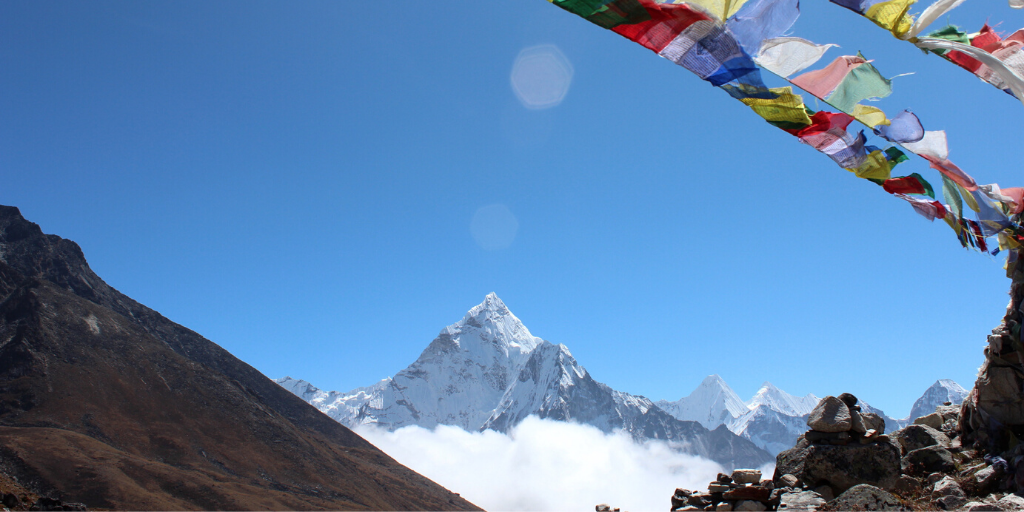
The mountains are the gateway to exploring the abundant beauty that nature has to offer and every year, millions of people go up to the mountains to trek. While the fun and excitement is unparalleled, there is always one uncertainty that every trekker, professional or amateur has when it comes to high altitude trekking. And that is Acute Mountain Sickness, or commonly termed in the trekking community as AMS. Being physically fit helps in preventing AMS to a certain extent (does not, however, rule out AMS entirely)
Acetazolamide (Diamox): (a tablet that helps prevent AMS) will be given to you every night before every trek, this will help your respiratory system acclimatize to the altitudeAMS does not discriminate between new and experienced trekker, if you start showing any of the symptoms mentioned above, please inform your trek lead immediately.
Accommodation & Food During the Trek
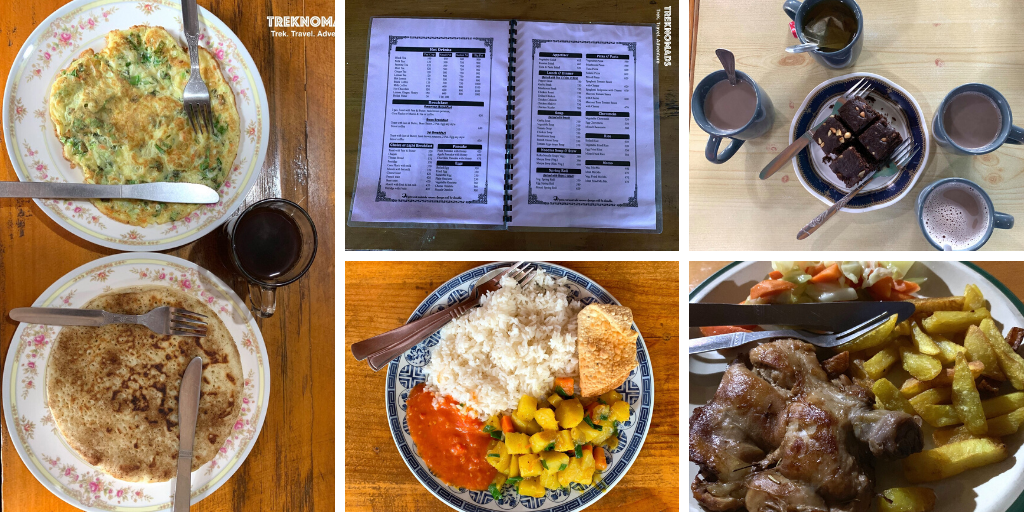
While the common way of living along the trail is by camping, but on our trek, you get to enjoy staying at double sharing wooden teahouses. The rooms will be comfortable with basic amenities. Blankets and fresh sheets will be given.
As cost of food on the Everest Base Camp trek gets extremely expensive, a good package inclusive of food can do you so much help. Basic continental food will be available all along the trail. You can also binge on Nepali delicacies like – Dal Vat Tarkari etc. Indian food will be scarce along the trail.
Insurance for Everest Base Camp Trek

Trekking in the Himalayas comes with its own set of risks. While adventure is fun and can be extremely thrilling, nature can be unpredictable, and to help secure you during your trek, it is of utmost importance that you are covered with insurance.
We’ve gone a step ahead and made sure that you don’t have to worry about scouting for the best insurance option out there. When you trek with us, your insurance comes as a part of your inclusions.
Tipping System in Nepal

As of what we understand, there is no tipping system in place as compared to rules in other countries where porters MUST be given a certain amount of tip for the work they’ve done by every trekker. When trekking with us, we strongly follow the unsaid rule of tipping well. While the amount to be tipped is at your discretion, we always encourage our trekkers to tip more if they’re happy with the porter’s service. To give you an example, you can tip from anywhere between Rs 100 – 500 per day (depending on your comfort).
As a part of this Everest Base Camp guide, here are a few things you can keep in mind when you think of tipping in Nepal:
Tipping Etiquette
There are a few things that you need to keep in mind while tipping the porters or guides in Nepal.
Handing over the money
Always hand over the money with your right hand, as using your left hand for this is considered to be rude in Nepal.
Tip Discreetly
It’s always better to tip your porter at the end of the trek, in which case, we suggest that you use an envelope, this will not only make them feel good about the tip, it will also give them a sense of respect. If you wish to tip smaller amounts, it’s always better to tip without creating a scene or saying it out loud.
Tipping doesn’t necessarily mean money
During your trek, it’s always a good sense to tip porters with food such as chocolates, energy bars, dry fruits, water, etc. After your trek, you can always leave behind your gear, clothes, shoes etc. that can be extremely helpful to these porters as they would never be able to invest in these otherwise.
The unsaid rule of weight
On our treks, we’ve seen porters more than 80 kilos of weight up and down the trail. While there is no rule in Nepal to check how much each porter can carry, it is always advised that as trekkers, you do not overburden them with heavy luggage. You can even do a ratio of one porter for two trekkers to ensure that they are not carrying too much weight.
What to Expect on a trek to EBC
The Everest Base Camp trek is a challenging trek that requires prior Himalayan trekking experience. During the course, we will trek 4 to 10 hours per day on moderate to steep grades, at varied elevations. Some days will be rest days with optional hikes to properly acclimatize, while on other days you will continue your journey towards EBC. Your Trek Captain will set a suitable pace to minimize the risk of altitude issues. Porters and pack animals will transport your gear. A signed medical consent form from your doctor will be required for participation. You will also be required to sign an indemnity bond before heading on the trek.
With this Everest Base Camp guide, we hope that you have understood the various aspects of trekking in the Everest region.

To join us on our departure to Everest Base Camp + Kala Patthar in April, click here.

[…] Recommened Reading: A detailed guide on Everest Base Camp Trek […]
[…] The best season to go for EBC […]